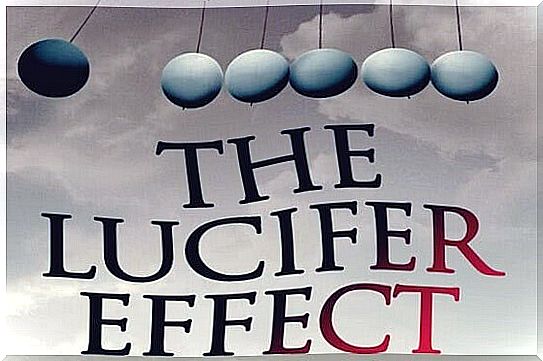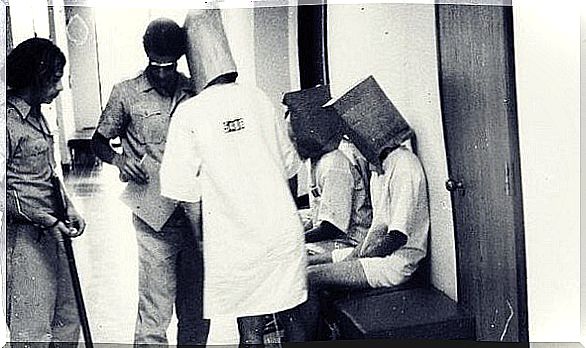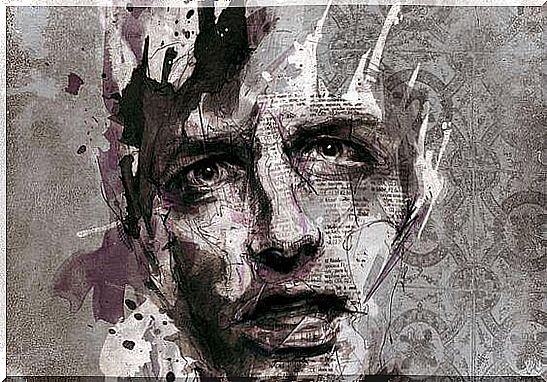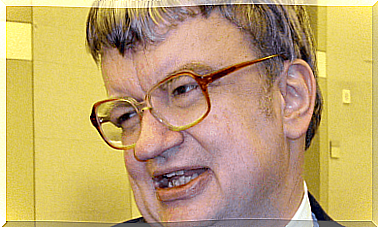Lucifer Effect: Why Can We Do Evil Deeds?

The Lucifer Effect can arise in any of our most everyday contexts. It refers to a transformation process. Thanks to him, an apparently normal, good and upright person is capable of committing atrocious acts. These are cases in which, far from there being a disorder or a traumatic past, what is actually there is the powerful influence of a situational factor capable of dehumanizing us.
Every good criminologist with a background in sociology will tell us that badness is not some kind of universal truth that exists as a mere antagonism to “goodness.” Evil starts from a context, a social situation and a series of psychological mechanisms related to the specific moment we are living. Thus, an example often given in many bibliographies on the subject is that relating to the Salem trials, with the famous witch hunt.
It was a historical moment delimited in time and reduced to a community that was rooted in religious fanaticism, Puritanism, mass hysteria, etc. Another good example of the Lucifer effect is the classic television character Walter White, from the series “Breaking Bad”.
In this case, anthropologists Alan Page Fiske and Tage Shakti point out that we have someone who starts a series of violent acts based on a perception of what is right, that is, that the one who is carrying out the action, however atrocious it may be, is more than justified by their complex personal situation and social context. However, we must bear in mind that no violence is “virtuous”.
It may be that at some point, and due to certain social and structural circumstances, someone feels the need or obligation to cross the line into cruelty, which is what explains the Lucifer Effect. But above all this must be morality. This incorruptible dimension that acts as an attraction to memory: far beyond the pressure of the surroundings or despair, there is logic and integrity.

The Lucifer Effect and Philip Zimbardo’s Study
It’s the night of April 28, 2004. The American population finishes dinner and sits in front of the television to watch the “60 minutes” program. Something changed that day. The television network invited them to discover something that many were not prepared to see. They began to broadcast images of Iraq’s Abu Ghraib prison, where a group of American soldiers (men and women) torture and rape Iraqi prisoners in the most heinous and humiliating ways.
One of the people who saw those scenes, with immense terror, was the well-known psychologist Philip Zimbardo. However, it must be said that for him those acts were not new, neither were they inexplicable nor strange. American society, for its part, saw a classic schema in its mentality as vulnerable. Suddenly, those who considered “the good and the saviors” were transformed, almost without knowing how, into the bad and the torturers.
The Zimbardo Experiment in 1971
After the publication of the photographs, those 7 US guards were charged and subsequently brought to trial. However, Dr. Philip Zimbardo considered that it was necessary to participate in the process as an expert witness to give an explanation for all that.
One of the reasons he felt compelled to collaborate in the trial was because it had already been through a situation very similar to that of the Abu Ghraib prison. In 1971, he conducted an experiment at Stanford University in California, where he divided two groups of American students into “cops” and “prisoners.”
- A few weeks later, Zimbardo witnessed unanticipated and even less imagined levels of cruelty.
- Liberal college students, known for their altruism, kindness, and sociability, turned into sadists by assuming their role as “cops.” It got to the point where Zimbardo was forced to stop the experiment.

The Lucifer Effect and its Psychological Processes
What happened at Stanford University with that experiment undoubtedly seemed a premonition of what would happen years later in Abu Ghraib prison. Dr. Zimbardo did not seek to excuse or justify the actions of the accused soldiers, nor did he want to turn them into victims, but rather to offer a scientific explanation of how specific circumstances can transform our actions entirely.
These would be the psychological processes associated with what Zimbardo called the Lucifer Effect:
- Conformity to the group. This theory enunciated by Solomon Asch demonstrates that the pressure of a certain environment with the members who are part of it drives us to maintain behaviors that may go against our values in order to achieve only one thing: being accepted.
- Stanley Milgram ‘s Obedience to Authority. This phenomenon is common, for example, in collectives of military or police hierarchy, where a good part of its members is capable of committing violent acts when they feel justified or ordered by people with higher positions.
- Albert Bandura’s moral disconnect. People have their own moral codes and value systems. However, sometimes they do a series of mental “pirouettes” to integrate behaviors that are totally opposite to their principles, until they reach the point of seeing as “correct” the morally “unacceptable”.
- Environmental factors. Dr. Zimbardo learned that these soldiers worked 12-hour shifts, 7 days a week, and for 40 days without rest. At bedtime, they did this in their own cells. Still, the premises were in disrepair, with mold, bloodstains and human remains on the walls.

However, this perverse side can be balanced by the strength of determination and integrity capable of setting limits and encouraging us to get out of certain oppressive contexts so that we don’t forget who we are, and pass each of our actions through the sieve of our values.
Zimbardo explained in his book “The Lucifer Effect” that the process of dehumanization was inevitable. Situational factors, the social dynamics of a specific context and psychological pressure can cause evil to be born and grow in us.









